The question: What if I can’t ride my horse? was asked at a clinic some time ago. There are many reasons why we might not be able to ride our horses:
a) The horse is not physically fit
b) The horse is unsafe to ride
c) The horse should be retired
d) The horse is not yet ready to be ridden.
Years ago I was doing some work at a dressage barn and a woman wanted me to look at her 24-year-old dressage horse. He should have been retired to light riding, but she was complaining that he could not pick up a right lead and that he could no longer do half passes and flying lead changes. I was actually stunned by her insensitivity to her horse, but then I realized that her horse was basically a used car to her, not a living, breathing being with feelings, and that his growing old was a tremendous inconvenience to her. She wanted me to apply “magic” to this situation, make him well enough that he could do all these things again. If I couldn’t guarantee that this horse would be able to do these athletic maneuvers with my treatment, then she didn’t want to hire me to work on him. Needless to say, I declined that challenge. I would say this horse fell under the category of a) and c). He may be physically fit for gentle riding that did not require gymnastic moves.
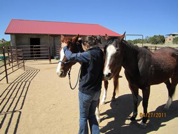 It crossed my mind how some people take it personally when the horse no longer can meet their needs. As though the horse purposely set out to fail them. This inability to meet an owner’s expectations weighs heavily on a horse, as it would on a child who had been written off because he did not live up to his high achiever parents’ expectations.
It crossed my mind how some people take it personally when the horse no longer can meet their needs. As though the horse purposely set out to fail them. This inability to meet an owner’s expectations weighs heavily on a horse, as it would on a child who had been written off because he did not live up to his high achiever parents’ expectations.
Before we jump to condemn this person, just think, this person lives inside almost every one of us unless we are clones of Mother Teresa. It’s an easy trap to fall into for competitive people – people who bought a horse to achieve a particular purpose, whether it be dressage, endurance, jumping, showing or eventing. They probably would not be the type of backyard owners who want to take their horse out for a simple trail ride or just keep a horse in the backyard because they love him, just as they love their dog and cat. Yet even backyard owners can have expectations.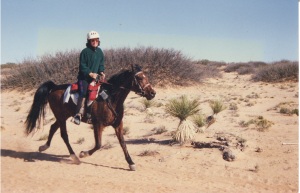
The horse (b) who is unsafe to ride, because he bucks, bolts, rears, can’t be caught or behaves in any dangerous fashion may or may not be able to be rehabilitated. Anyone taking on such a horse needs to take into consideration that this horse may not be able to be ridden, ever. Training a horse like this should not be undertaken by novices. Doing holistic liberty training will expose the holes in that horse’s training, and will show whether or not the horse will be safe to ride. If the horse is really dangerous, it may not be safe to keep him. If he shows some promise with the training, then it might be worthwhile to stick with it. This is a long term project horse. Either way, it may be best for the horse to be ridden by a more experienced rider, if he can be ridden at all.
Another type of horse that is unsafe to ride is the horse that has neurological problems, because of disease or head trauma. He might be a “wobbler,” have EPM, or otherwise be unable to stand on his feet squarely. An older horse that begins to get unsteady is another type of horse that is unsafe to ride. Usually the vet will tell the owner to stop riding the horse before he goes down with his owner. Sometimes bodywork can help stabilize the horse enough and do some rewiring so that he can get steady on his feet again.
d) is another horse that is unsafe to ride – the horse that is not ready to be ridden yet. Two-year-olds are not mentally or physically ready to be ridden, no matter what the racetrack people think. The bones, tendons and ligaments on a young horse do not become strong enough to hold a rider for any length of time until age 4. That is why there are so many racehorses breaking legs, and suffering other irreversible structural damage before the age of 3 on the racetrack. It is heartbreaking that people’s egos rule sports where horses are expected to execute athletic maneuvers they are not mentally or physically prepared for. In endurance riding, a horse has to be four to compete in a limited distance ride and five to compete in a 50 mile ride. This rule tries to ensure that the horse has the bone development to accomplish this distance without severe injury, at a reasonable pace, of course.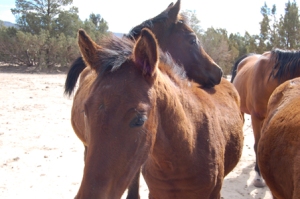
Some horses take even longer than others to mature. It depends so much on the breed, structure and temperament.
I enjoy working with performance horses because many horses enjoy their jobs and owners I work with over time are very attentive to their health. I also enjoy working with horses who have had compromised beginnings such as rescues, and geriatric horses with many different physical challenges. Most people hold reasonable expectations, not expecting their two-year-old pony to jump six-foot-high fences. A fit body responds very well to treatment and doesn’t need as much bodywork intervention unless they get injured, whereas older horses, whether fit or not, generally need to be on a maintenance program.
Taking care of older horses becomes more complicated because they need more support and maintenance. Some people just get older with their horses and see them off, never getting another horse. Others keep younger horses so that they don’t expect too much of the older horse, which is great. Horses should enjoy their old age without being expected to do too much. Just because they can, in some instances, does not mean they are comfortable doing so.
A horse who needs rehabilitation can be helped by being “met” and acknowledged for who he or she is. Bodywork such as Equine Ortho-Bionomy and Equine Positional 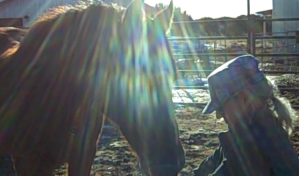 Release meet the individual where they are, not expecting them to be different or able to do things they are unable to accomplish at this time. This opens the door to allow the body to heal. Holistic liberty training allows the horse to find his way back to himself through quiet and consistent work, not demanding performance. With patience, what can emerge from these approaches is a horse who wants to show you something; present you with a gift of something he knows or just figured out.
Release meet the individual where they are, not expecting them to be different or able to do things they are unable to accomplish at this time. This opens the door to allow the body to heal. Holistic liberty training allows the horse to find his way back to himself through quiet and consistent work, not demanding performance. With patience, what can emerge from these approaches is a horse who wants to show you something; present you with a gift of something he knows or just figured out.
What differentiates this work, in its entirety, is that it is not goal-driven like most trainings and bodywork programs. This is not a training that can be accomplished in 30 or 60 days, nor is it one that can be accomplished by a certain number of revolutions in the round pen, or techniques. It is not a bodywork method where you can simply push the body back into alignment immediately, only to slip out of alignment a few days later. The body, having been acknowledged and celebrated, finds its own alignment and self-correction, a much gentler journey than one imposed upon it…a journey that brings it back to itself so that it can continue on without constant recalibrating.
Goal-oriented training can be added later, once the horse really wants to learn new things. To have a horse be a joyful partner is far more satisfying than having a horse going through the motions. Most of this training work can be accomplished by a sensitive, attentive horse person with clear energy, and beginners come to the work fresh and often they don’t come with agendas. Some bodywork can also be accomplished by people who have learned a few tools to help their own horses. They can help their horses maintain good health between sessions from a professional.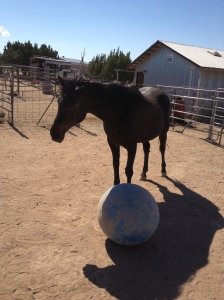
The beauty of the liberty foundation work is its simplicity. If I were to take two years rehabilitating a horse for you, you would go crazy with the expense and waiting for it to happen. You would want to send the horse to a regular trainer and get that accomplished in 30 days. A horse that truly needs “rehabilitating” may not be able to meet the expectations of a professional trainer of conventional methods. If you can learn liberty foundation work and do it yourself, and can keep from getting too caught up in how long it takes, in two years you will have a different horse. You still may not have a horse you can ride, but you will be closer to your goal and have a happier horse. Your relationship with the horse will allow you to do many things that were not possible two years before.
And what if you still can’t ride the horse? That’s something to think of. Can you afford to keep and feed a horse you can’t ride? Can he be used for other things – pulling a cart, babysitting another horse, demonstrating the work you do?
The sense of loss surrounding the loss of a riding horse is truly palpable and not to be ignored. Riding another horse will help lighten the load for the out-of-commission horse and allow him to heal from whatever is ailing him without pressure.
******
A good way to experience work on yourself besides having a people session is to have a horse and rider session. For those who want to experience horse and rider work, take advantage of $10 off one session with me – good for the rest of August through the end of September.
Services: Bodywork (Ortho-Bionomy for people, Equine Positional Release/Equine Ortho-Bionomy): private sessions, tutorials, phone consultations, distance healing and gift certificates
Liberty Training: clinics, mini-clinics, workshops, private and semi-private sessions, tutorials, consultations: by appointment: 505.501.2478 or emailing susansmith@orthohorse.info
Looking forward to Fall Liberty Training mini-clinics – Tell a friend and get to experience liberty work together! Dates: October 5, November 9 – 9-5 p.m. Contact me for details.
Liberty Foundations Waterhole Rituals Equine Clinic at Spirit Horse Ranch near Oklahoma City, co-teaching: Ruella Yates, Certified Carolyn Resnick Trainer and Susan Smith, Suggested CR Trainer. Liberty Horse Training. September 28-29, 2013. Contact Ruella Yates at ruella@libertyfoundations.com, or 405-771-4274. Susan will be giving a three-hour tutorial on her OrthoHorse bodywork for a limited number of students. Call 505-501-2478 or email susansmith@orthohorse.info for details.



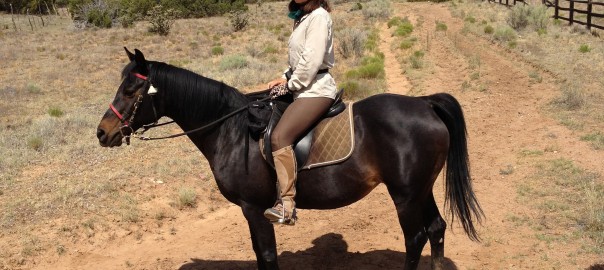
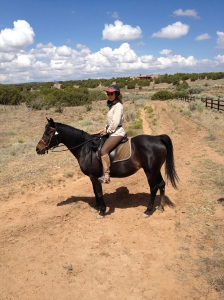
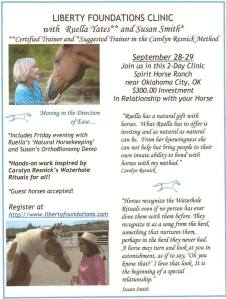
Reblogged this on Free Spirit Farm | Freehold, NJ and commented:
Great article reminding us that we always have to have a realistic interpretation of our equine partners.
Thank you for re-blogging!
Very thoughtful post, keeping the best interest of our horses as our first consideration. I look forward to your weekly updates, and find they always give me something to think about. Thank you.
I have had everyone else ride my horse but me..I get him saddled and on step next 2 him and feel nervous..he feels my nervousness………someone else ok but me ………
Patty, You didn’t say if maybe you’ve had an accident or something has happened which will cause you to be nervous around your horse. It’s very natural to be this way because horses are large and can hurt us. For as long as it takes for you to become comfortable, it’s good you have someone else riding your horse. I know what that trauma feels like firsthand and it’s helpful to have someone help you move through it. I do a lot of this type of trauma work here in Santa Fe, NM and also some distance work. All the best to you.